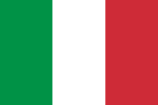A.C. Siena
 |
||||
| Full name | Associazione Calcio Siena SpA | |||
|---|---|---|---|---|
| Nickname(s) | Bianconeri ("White-black"), Robur ("Strength") |
|||
| Founded | 1904 | |||
| Ground | Stadio Artemio Franchi, Siena, Italy (Capacity: 15,725) |
|||
| Chairman | ||||
| Head Coach | ||||
| League | Serie B | |||
| 2009–10 | Serie A, 19th (relegated) | |||
|
||||
Associazione Calcio Siena is a football club based in Siena, Italy. The club was formed in 1904 and currently plays in Italian Serie A, having arrived there in 2003 for the first time. The team's colors are white and black. Its stadium is named Stadio Artemio Franchi, although its capacity is only 15,725 and is located in Siena, whereas its more famous namesake is located in Florence.
Contents |
History
Formed in 1904 as Società Studio e Divertimento (Society for Study and Entertainment), a sports club characterized by a black and white check jersey (derived from the city of Siena coat of arms), it opened its football section, named Società Sportiva Robur, in 1908. Today the name "Robur" is widely used by the local supporters to distinguish the football team from the two basket ones, "Mens Sana" and "Virtus".
The team finally became known as Associazione Calcio Siena in 1933/1934. In 1934/1935 Siena were promoted for the first time to Serie B. In the post-war season 1945–46, Siena played in the top division of Italian football for the first time. In that season, a mixed wartime league composed by Serie A and Serie B teams was played. Some of the southern sides that took part in the top division, including Siena, were Serie B teams, while northern Serie B teams played at the second level with the Serie C teams. Therefore, although Siena played in the top division, it was not considered having played in the Serie A in that season, not having qualified for the National Round.
After 55 years played in several minor leagues, in 1999/2000 Siena was again promoted to Serie B. After a good season on 2000/2001, the next season saw Siena in serious troubles, and coach Giuseppe Papadopulo, first sacked but then recalled at the helm of the team, was able to save the team in the last day.
The following season, again with Papadopulo as head coach, saw the first Serie A promotion ever of Siena, led by players such as Rodrigo Taddei and Pinga. And they had waited for 58 years after their last appearance in the top division of Italian football.
The 2003/2004 campaign, remembered as the first Serie A season in the club's history, ended in a good 13th place.
In the 2004/05 Serie A campaign, with Luigi De Canio as head coach, Siena struggled for large periods of the season, languishing in the relegation zone for a great deal of the campaign, and with the team drawing far too many games and barely taking any wins, the club looked a sure bet to be relegated.
A resurge of form towards of the end of the season gave them hope however, and a 2–1 win against already relegated Atalanta on the last day saw them secure safety and an acceptable 14th place in the table.
The 2005/2006 season also saw Siena fighting hard and successfully for keeping its place in Serie A. This season, ended in a 17th place, was also the last at AC Siena's helm for coach De Canio. For the 2006–2007 season, Mario Beretta, who led Parma in the previous season, was appointed as new head coach. He led Siena to save from relegation after a 2–1 home win to Lazio in the final matchday.
During the 2006–07 season, club chairman Paolo De Luca, who took over in 2001 and helped the club to their first historical Serie A promotion, started talks to sell AC Siena to a conglomerate of Tuscan businessmen led by Giovanni Lombardi Stronati, president of Valle del Giovenco.[1] The bid was finalized on March 30, 2007, one day before De Luca died after a long illness.[2]
The head coach for the 2007–08 campaign was to be Andrea Mandorlini, but he left the club by mutual consent on November 12. Former coach Mario Beretta once again took charge. [1]
The club also explored the possibility of changing its denomination in order to include the name of their main sponsor, Monte dei Paschi di Siena.[3] On July 9, 2007 the club announced it had changed their denomination to A.C. Siena Montepaschi. However, the name change needed to be accepted by the Italian Football Federation in order to become official:[4] After the refusal by FIGC, this idea was abandoned.
The president of the club is Massimo Mezzaroma.[5]
Current squad
- As of 17 July 2010[6]
Note: Flags indicate national team as has been defined under FIFA eligibility rules. Players may hold more than one non-FIFA nationality.
|
|
Out on loan
Note: Flags indicate national team as has been defined under FIFA eligibility rules. Players may hold more than one non-FIFA nationality.
|
Retired numbers
- 4
 Michele Mignani, centre back, 1996–1997, 1998–2006
Michele Mignani, centre back, 1996–1997, 1998–2006
Former players
References
- ↑ "Siena sell to new investors". Football Italia. 2007-03-03. http://www.channel4.com/sport/football_italia/mar3e.html. Retrieved 2007-07-11.
- ↑ "Siena mourn President De Luca". Football Italia. 2007-03-31. http://www.channel4.com/sport/football_italia/mar31h.html. Retrieved 2007-07-11.
- ↑ "Siena set for name change?". Football Italia. 2007-05-10. http://www.channel4.com/sport/football_italia/may10o.html. Retrieved 2007-07-11.
- ↑ "L'Assemblea Straordinaria" (in Italian). Football Italia. 2007-07-09. http://www.acsiena.it/comunicatidetail.php3?id=5213. Retrieved 2007-07-11.
- ↑ http://www.acsiena.it/societa.php
- ↑ "La squadra ha scelto i numeri di maglia" (in Italian). AC Siena. 17 July 2010. http://www.acsiena.it//dettaglionews_1.php?id=8562. Retrieved 20 July 2010.
External links
- (Italian) Siena's official website
- (Italian) Robur 1904
- (English) Siena statistics
|
||||||||||||||||||||
|
|||||||||||||||||||||||||||||